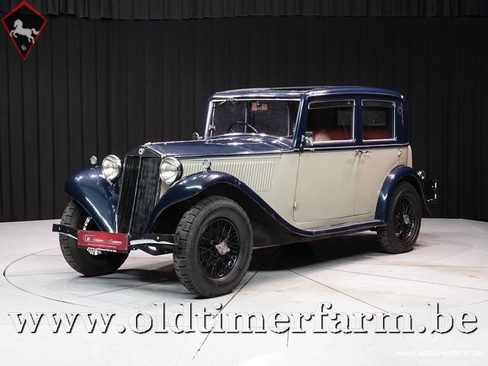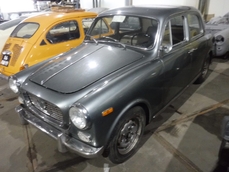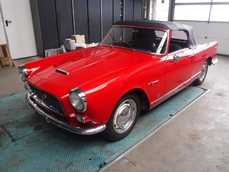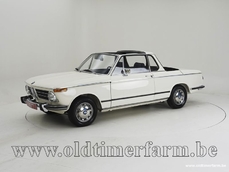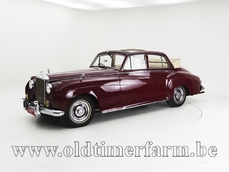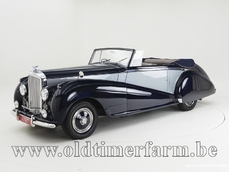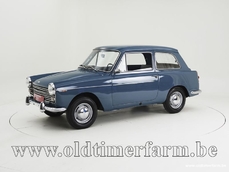Lancia Other '35 1935
Allgemeine Beschreibung :
❗Lowered price from img src="https://static.xx.fbcdn.net/images/emoji.php/v9/t33/1/16/2705.png" alt="✅" /> €21.500- €18.500 img src="https://static.xx.fbcdn.net/images/emoji.php/v9/t33/1/16/2705.png" alt="✅" /> When the crash occurred in 1929, the entire global auto industry collapsed. In Italy, Lancia realizes that its large models have no chance of surviving. Like other industries, the company must reorganize. The Lancia Augusta is a model designed under these circumstances. It replaces the more luxurious Lambda model that several Hollywood stars own, such as Greta Garbo. Like this one, the Augusta is despite everything a sedan of a certain standard, superior in any case to the concurrent Fiat. The car is relatively narrow to navigate easily in the streets of Italian cities, the interior is on the other hand bright and spacious to accommodate five adults and the handling is safe. The production of the new Augusta quickly met with the favor of the public to the point that sales greatly exceeded all forecasts, even the most optimistic. This model will be very profitable for the brand, V. Lancia would have said it was the best "deal" of the company, better than the Lambda. The "little" Augusta will be a prodigy that will not be renewed except perhaps Aprilia. In 1935, 90% of Lancia's automotive industrial activity was devoted to the Augusta, with excellent financial results. It is this which financially saves Lancia and which will make it possible to finance future projects until the 1950s, with Aprilia and Ardea. The Lancia Augusta is the first automobile in the world to receive a modern self-supporting body, like those found on cars of the 21st century. It will also be the first Lancia car to be built on a production line of The manufacturing of the Augusta will end on 12/05/1936. Specifications Bodywork Length : 405 (159.4) Width : cm (in): 145 (57.1) Height : cm (in): 155 (61) Wheelbase : cm (in) : 265 (104.3) Weight: kg (lb) : 850 (1874) Mechanics. Displacement : V4 1196 cc (73 cu in), front-mounted Valve gear : 8 Fuel system : 1 Zenith carburettor Gearbox : 4-speed manual Drive wheels : rear-wheel drive Maximum power : 35 hp at 4000 rpm Maximum torque : Maximum speed : 130 km/h (81 mph)
http://www.oldtimerfarm.be/en/collection-cars-for-sale/5676/lancia-augusta-35.php
1935 Lancia Other '35 is listed verkauft on ClassicDigest in Aalter by Oldtimerfarm Dealer for €18500.
Fakten der Auto
Karosserietyp : Auto Marke : Lancia Modell : Other Ausführung : '35 Hubraum : 0.0 Modelljahr : 1935 Lage : Aalter
Verkauft
Angaben Zum Verkäufer
Verkauft
People who viewed this Lancia Other also viewed similar Lancia listed at ClassicDigest
Other cars listed for sale by this dealer
über Lancia
Ah, Lancia, die italienische Marke, die auf dem schmalen Grat automobiler Brillanz getanzt hat! Lass mich dich auf eine Reise durch die fesselnde Geschichte von Lancia mitnehmen, einer Marke, die Leidenschaft, Innovation und Rallye-Erfolg verkörpert.Akt 1: Die Frühen Jahre (1906-1920er)
Lancia wurde 1906 von Vincenzo Lancia gegründet, einem Ingenieursgenie mit einer Vorliebe für das Außergewöhnliche. Die Marke erlangte schnell einen Ruf für ihre präzise Ingenieurskunst und innovative Herangehensweise. Der Lancia Alpha, 1907 eingeführt, war das erste Auto mit einem schmalen V4-Motor und setzte den Ton für Lancias Einsatz für technische Exzellenz.
Akt 2: Innovation im Zentrum (1930er-1950er)
Die 1930er Jahre sahen Lancia die Grenzen der Innovation mit Modellen wie dem Lambda ausloten, dem ersten Auto mit selbsttragender Monocoque-Chassis. Der in den 1930er Jahren eingeführte Aprilia präsentierte wegweisende Aerodynamik und einen V4-Motor und festigte Lancias Ruf als Pionier.
Akt 3: Eleganz der Nachkriegszeit (1950er-1960er)
Nach dem Zweiten Weltkrieg begeisterte Lancia weiterhin mit Modellen wie dem Aurelia, dem ersten Serienauto mit einem V6-Motor. Es verband Leistung mit Komfort und Eleganz. Der Flaminia folgte und verkörperte Luxus und fortschrittliche Technik.
Akt 4: Rallye-Dominanz (1970er-1980er)
Lancia hat sich mit einer beispiellosen Rallye-Geschichte einen Platz in der Motorsportgeschichte gesichert. Der Lancia Stratos, ein keilförmiges Wunder, dominierte die Rallyeszene in den 1970er Jahren und holte von 1974 bis 1976 drei aufeinanderfolgende Rallye-Weltmeisterschaften. Der Delta Integrale, in den 1980er Jahren eingeführt, setzte diese Rallye-Herrschaft mit mehreren Meisterschaften fort.
Akt 5: Herausforderungen und Widerstandsfähigkeit (1990er-2000er)
Das späte 20. Jahrhundert brachte finanzielle Herausforderungen für Lancia mit sich, was zu Zusammenarbeiten mit anderen Automobilherstellern führte. Trotz der Schwierigkeiten führte Lancia Modelle wie den Thesis und den Ypsilon ein, die den Einsatz für Stil und Substanz zeigten.
Akt 6: Neuerfindung im 21. Jahrhundert (2010er-Heute)
In den 2010er Jahren konzentrierte sich Lancia auf die Ypsilon als Hauptmodell, um die Markenstrategie neu auszurichten. Obwohl die Produktionszahlen zurückgingen, behielt die Marke ihren Ruf für unverwechselbares Design und Komfort bei.
Epilog: Ein Erbe von Leidenschaft und Innovation
Lancias Geschichte ist eine von Leidenschaft, Innovation und Motorsporterfolg. Die Marke, mit ihren bahnbrechenden Designs, technologischen Fortschritten und Rallyetriumphen, hat einen unauslöschlichen Eindruck in der Automobilwelt hinterlassen. Lancia mag in den letzten Jahren Herausforderungen gegenüberstehen, aber ihr Erbe lebt weiter, gefeiert von Enthusiasten, die die Magie in jedem Lancia-Werk erkennen
